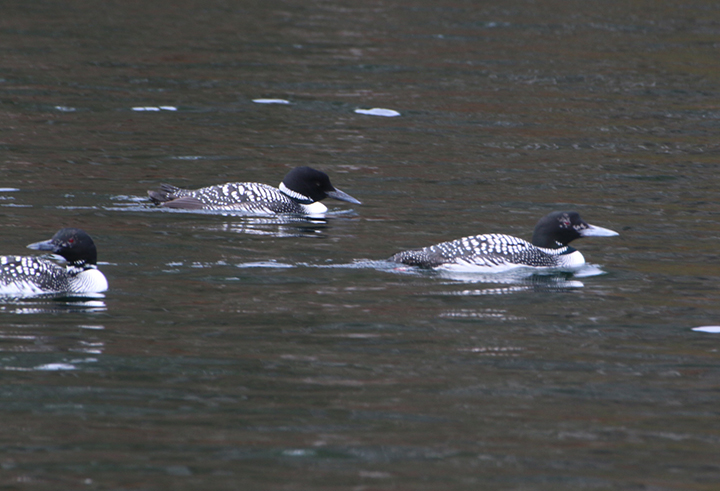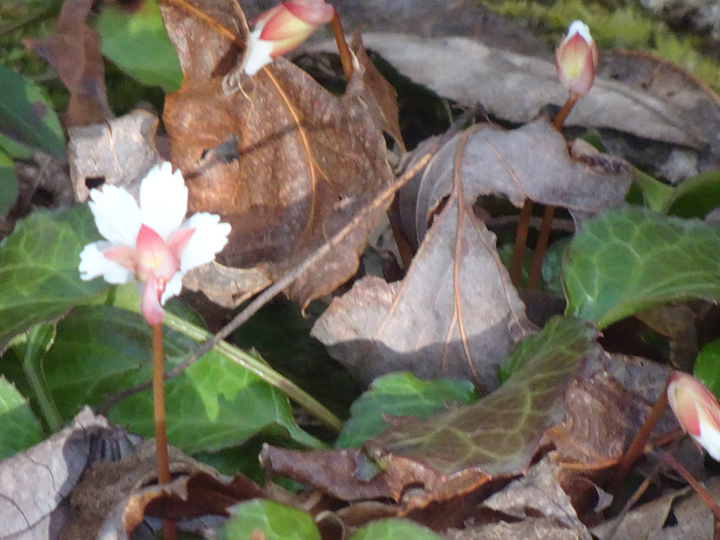
Outdoor Adventures with Gary Lee - Vol. 301
I’m back in the north country and of course it snowed another four inches overnight, but the temperature did get up to 47 the first day home and it was even warmer today. Amy Sauer fed my birds while I was gone, and they were still here in big numbers. She even saw a Robin by her house in Eagle Bay, Sunday. I did have a Sharp Shinned Hawk come through yesterday, but I don’t know if it caught a bird or not. I scooped the four inches of snow from in front of the garage and bird feeders.
On the way home I stopped to see my master bander Gordon Howard who lived only a half hour away from Devils Fork State Park in Seneca, SC. He gave me a tour of his house and property which has access to Keowee Reservoir which is just below Jocassee Reservoir. There were some trees that came down when the Hurricane came through that area. Duke Power operates the dams and pumps in both reservoirs. Gordon said the day after I left, they pulled water from Keowee back up to Jocassee. Keowee has a surface area of 18,500 acres and when they pull a foot of water back into Jocassee it would represent over six billion gallons of water. The next day that foot of water was back in Keowee. The pipe that the water is pumped through is thirty feet in diameter. Another reservoir, Bad Creek is NW of Jocassee and water is pumped from Jocassee up to this reservoir and power created when it comes back down. Jocassee is at elevation 1,110 feet, 7500 acres in size, three hundred feet deep reservoir in NW SC created 1968- 1973 by the state in partnership with Duke Power. The dam is 385 feet high and 1,750 feet across. The area adjacent to the dam where fill that was used in making the dam has a desert climate in the mountains with three rare ferns that grow on that area.
While going on a side trip from Jocassee going to Whitewater Creek Falls we went by the Bad Creek Reservoir and our driver Brad said that there was a water bottling plant taking water from Bad Creek, but they changed the name to Crystal Geyser which you might find on your store shelves. Not too many people would drink Bad Creek water.
The Jocassee Reservoir was where the movie Deliverance was about and filmed. Gordon Howard said he kayaked and canoed some of the rivers that flow into the reservoir before it was flooded.
Staying in the villas in Devils Fork State Campground, this group of Loon lovers with our leader Jay Megar and touring on pontoon boats operated by Jocassee Tours owner Brooks Wade and his wife Kay or one of their employees. We were on the water four of the five days while there watching Loons. A sideline Jay started his Loon watching career right here on Stillwater Reservoir with Judy McIntyre and local Kristen Nelson Drew in 1991.
On the first day on the water, we did a Loon count, one boat on one west side of the reservoir and one on the east side of the reservoir. Luckily, I got on the side that had ninety-nine Loons and the other side had 33 Loons. We also counted Eagles (5), Pied Billed Grebes, over one hundred fifty Horned Grebes, several Belted Kingfisher and a few different ducks. The other group were down by the dam and saw over thirty Bonaparte Gulls, we saw none. Brooks, whose boat I got on all four days, says when the Bonaparte Gulls arrive in the fall the Loons will soon be there and when they reappear in the spring the Loons are about to leave. They have banded thirteen Loons on Jocassee as they are hard to catch when they don’t have chicks. We saw three banded Loons that first day, one the first one they banded they named Bob, and we saw him up in the north arm. He showed us both legs with his bands and almost performed for us. Only two of the thirteen banded Loons from here have been seen on their northern territory, one in Minnesota and one in Wisconsin but not Bob.
The other three days on the water we spent watching individual Loons for an hour recording all their activities and interactions with other Loons and other birds. Some were underwater fishing much of the time, others were just resting or preening most of the time. We only saw one make a short flight as most still didn’t have all their flight feathers fully out. I did see one fly in and land in front of our villa one morning. These Loons were in all different forms of plumage age wise. We did manage to pick up a few feathers that they had plucked out. The other boat was doing the same thing, and they saw quite a fishing frenzy with fish jumping right out of the water to escape the Loons. We had just a short fishing frenzy and the loon we were watching was part of that. There was a Kingfisher on a stub nearby that dove right among the Loons and jumping bait to get a fish. We never saw a Loon come up with a bigger fish as they ate most of the little ones underwater. We recorded water and air temperature, water depth, wind speed and using a Secchi disk how far we could see it under water. We timed their dives and many times it was over two minutes, and we got the GPS of our location. Two of the loons we watched were banded and it was easier to find them in a group. We did four different birds each of the three days and got all the information. Two days while coming back in we got to see the flock of Bonaparte Gulls all around the boat. We saw most of the waterfalls around the shoreline of the reservoir during our Loon surveys.
On the last day one of our observers, Emily, said she was going down to see the Oconee Bells in flower, a rare plant that grows along a trail in back of the boat trailer parking area. I went down the trail with three other young ladies. This area had been laid flat by the hurricane and a lot of cutting was done to open this trail. They saw a couple single flowers as the plants grew along a small stream and I found a group of five blooms by a stump about six feet off the trail and took a few photos. This topped off the end of a great week of watching Loons in SC.
Some birds are moving north, but that’s another story. See ya,
Photo above: Three adult loons one in front banded
